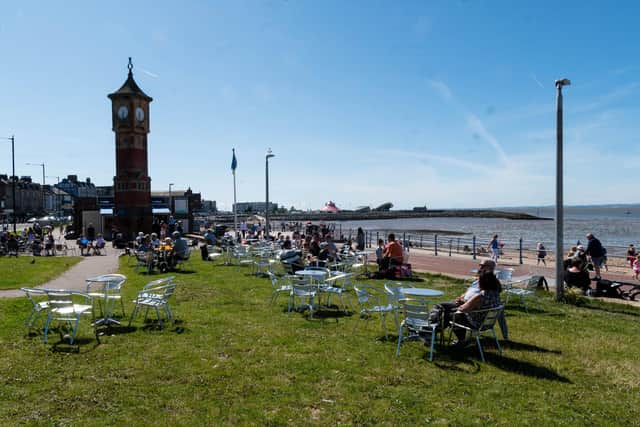Morecambe’s iconic clock tower now telling the right time after months of repairs
and live on Freeview channel 276
Last week the Lancaster Guardian reported that the clock faces were being put back into the clock tower but learned the clocks were not working and the hands were stuck at 12pm.
Lancaster City Council gave the go-ahead in February for £12,000 worth of repairs to the clock faces to be done by the Cumbria Clock Company.
Advertisement
Hide AdAdvertisement
Hide AdAn engineer from the Cumbria Clock Company could be seen reinstating them inside the tower on Friday (May 5).


A spokesman for Lancaster City Council said: “The clock faces are finished apart from some external repointing which still needs to be undertaken.
"The work which remains outstanding is the installation and commissioning of the mechanism.
"We expect works to recommission the clock tower clock to be complete by Friday, May 19.”
Advertisement
Hide AdAdvertisement
Hide AdNow it appears the works to recommission the clock tower clocks have been completed ahead of time because the clocks are now working.
In July last year a petition was launched by John Parkinson calling for Morecambe's clock tower to be repaired.
John, Morecambe born and bred, noticed the clock's four lifeless faces most mornings when he and a friend were voluntary litter-picking between the lifeboat station and the Midland Hotel.
The grade 2 listed clock tower was built in 1905, a gift to his native town by John Robert Birkett, Mayor from 1903-1906.
Advertisement
Hide AdAdvertisement
Hide AdIt was designed by two young architects, Charles Cressey and William Keighley, who were also responsible for the former Barclays Bank building in Euston Road.
The clock tower was built by John Edmondson, and Rhodes of Lancaster provided a weight driven clock which featured 4 dials, each 40 inches in diameter, and which struck the hours on a bell 20 inches in diameter, and was illuminated at night.
In later years "Gents" of Leicester removed the old clock and installed a master clock with 4 slave dial units, and 4 new perspex dials with clear perspex over them to protect them from weather and vandalism.
This worked for a time, but due mainly to vandalism and the weather and salt air, those clock movements have been replaced with synchronous clock movements behind each dial.